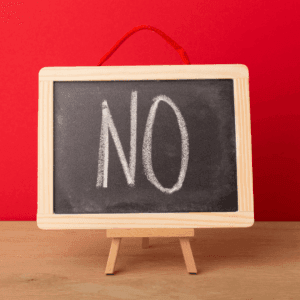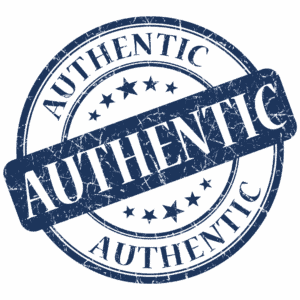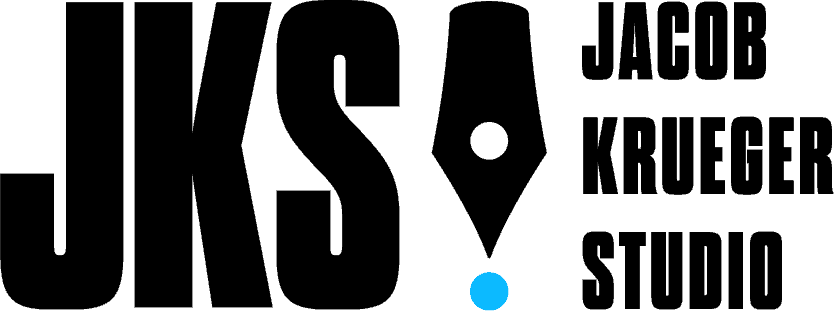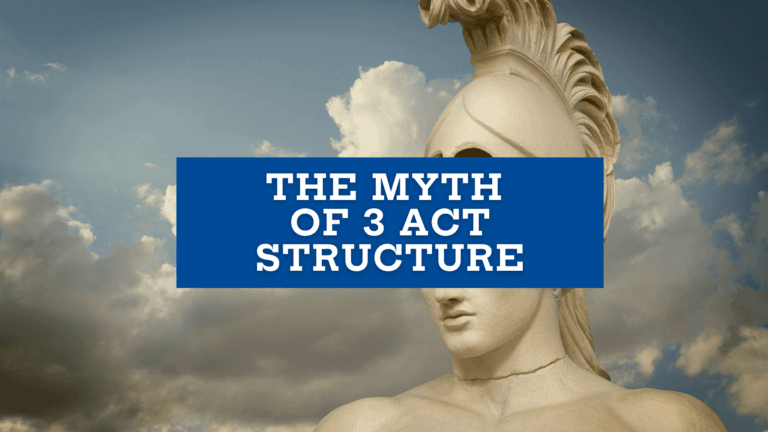Halston: How to write a likable main character
This week we’re going to be looking at the new limited series Halston and how to write a screenplay where the main character isn’t exactly likable.
If you look at Halston, the main character played by Ewan McGregor is basically an assemblage of neuroses and self-involvement that we probably shouldn’t like. And yet, we managed to stay with Halston for five episodes, completely involved and connected and in love with Halston and his world.
So how does that work? How did they pull this off? Why do we care about Halston?
There’s a famous book called Save the Cat that many of you are probably familiar with.
Save the Cat suggests that if you are writing an “unlikable” main character like Halston, and want your main character to become likable, you should send a cat up a tree and let the main character heroically save the cat. 
The idea is that the audience will then magically fall in love with the previously unlikable main character, because they can see what a lovely person he or she is.
Of course, you can probably imagine that I think that this is total baloney!
Look at the character we meet in Halston!
Halston is a character who probably wouldn’t even condescend to pet the cat if it was anything less than a purebred.
Halston is a character who would probably have screamed at the cat and blamed the cat for his own failings until the cat climbed up the tree to escape.
Halston is a character who would most likely leave the cat stuck up in that tree and then take credit for whatever the cat’s work was.
Halston is a character who’s so self-involved that he might not even be aware of the cat.
Halston is a character who would likely chop down the tree that the cat was stuck in, and land it smack dab in the middle of his own house, and then blame the rest of the universe for it.
Halston is a character who’s constantly egotistical, narcissistic and self-involved. He’s not saving the cat at all. Yet, he’s far from an unlikable main character. In fact, we don’t just like him, we love him.
Of course, this is also true in life. When you think about your friends, everybody’s had that person in their life that is just too nice.
“Wow, they brought me cookies. Wow, they showed up and helped me mow my lawn. Wow, they’re so nice. Wow, after doing all this nice stuff, I oddly still don’t I really want to hang out with them?”
On the other hand, you might have another character in your life who is a little bit of a jerk, but you kind of get them and you enjoy their company.
I’m not suggesting that a main character needs to be nasty for us to love them. There are plenty of lovely main characters that we fall in love with. Look at the main character in Soul that we discussed a couple podcasts ago. He’s a beautiful character. He’s a sweet, sweet man.
Look at the main character of Chef, another wonderful, lovely main character. Look at the main character of Toy Story. Why do I keep going to Pixar movies? Because they have sweet main characters. The character doesn’t have to be nasty.
Look at the characters of so many movies and TV shows and you’ll see lovely people trying to do the right thing. You’ll see the Erin Brockovich type characters, those characters who are fundamentally good people. Look at every Tom Hanks movie ever made, like Forrest Gump, for example. Tom Hanks constantly plays a character who is an all around good guy, and these characters are equally likable.
I’m not suggesting that your character needs to be a badass tough guy like Walter White. I’m not suggesting that every character needs to be narcissistic and self-involved.
I’m suggesting that we like characters in movies and TV shows for the same reason that we like characters in life.
 We like characters who are authentic. We like characters who are pursuing the things that they want, in specific ways that are unique to them. It’s that authenticity that makes a likable main character in a screenplay, just like in life.
We like characters who are authentic. We like characters who are pursuing the things that they want, in specific ways that are unique to them. It’s that authenticity that makes a likable main character in a screenplay, just like in life.
We don’t connect to a jerk because they’re a jerk. Or a nice person because they’re a nice person. We connect to characters because they’re being authentically themselves!
It’s why we connect to Halston. Halston is so authentically narcissistic. He is not hiding anything. It’s right there on the surface. He is a self-involved jerk who really only cares about his art and his fame. In fact, if he had to choose between the two of them, he would probably choose his fame.
Halston is a person who will literally stop at nothing to serve his fashion design. He is a person who will literally stop at nothing to serve his ego. And he’s authentically himself. He shows you his how in every frame of this limited series, constantly outdoing the lengths he’s willing to go to in order to serve his own ego.
I’m not saying there aren’t other layers to Halston. I’m not saying he’s not a complicated character who has lovely qualities as well. But it’s that dominant trait, the way that Halston is so specifically Halston that makes us fall in love with him.
(Similarly, even though she’s a completely different kind of character, the Liza Minnelli character in Halston is also specifically herself. She’s troubled, but she’s totally sweet and supportive and kind. We know who she is and we get her and we like her because she’s authentically Liza).
A likable main character is simply a character who consistently shows their specific, authentic how as they pursue what they want against tremendous obstacles. And an unlikable main character is simply one who fails to do so.
What’s really interesting in Halston is that you can see that this concept works even if the obstacle is internal, even if the character is creating the obstacle for himself.
Look at Halston’s world. Halston basically gets everything he could want. He designs hats. Jackie Kennedy wears one of his hats and turns him into the most famous hat designer in the world. So many other people would be satisfied and delighted with this kind of success, but hats start to go out of fashion and Halston needs to hold onto his fame.
And once again, he gets the opportunity of a lifetime dropped right into his hand: the “Battle of Versailles Fashion Show.” Any other character in the world would say, “That’s wonderful. Of course, I’d love to do that.” But Halston says, “No.”
He has to be forced into it.
Later, having once again stumbled into success, he wants money so that he can scale. He desperately needs money. Or at least that’s the way he thinks about it.
Voila! Here’s a businessman who is desperate to help him, who’s chasing him down, basically begging, “Halston, please let me help you. Please let me give you money. Let me ask for very, very little in return. I’m not going to be the corporate raider that you imagined me to be. I’m just going to ask for you to kind of subtly work with me, just a little bit, you know, throw me a bone every once in a while, and you can mostly just do what you want.”
Any other character would say, “Thank you! Thank you! Thank you!” But Halston says, “No!”
Halston is a character who is built around that “No” and who foundationally needs to be the one genius in the room. That “how” is the essence of his character. And it’s what makes him a likable main character, even though so many of his actions are deeply unlikable.
Even in his love life, we can see that “no” present. Halston is a guy who desperately wants love, and guess what happens? He actually finds a man that he loves, and who loves him. Sure, this man is a very complicated prostitute, but nevertheless, it’s a true love for him. Yes, he’s problematic. Yes, he gets Halston involved in drugs and yes, he blackmails Halston. Yes, he does all kinds of horrible things to Halston, but what does he want? He just wants some validation as an artist! It’s the one thing that Halston can’t give him. He just wants Halston to say “I love you.” It’s the one thing Halston can’t give him, until it’s too late and that “I love you” is a “goodbye.”
Once again, Halston is saying, “No, no, no!” And even though he’s destroying his own life by doing it, we still root for him and care for him.
So we have a character who is built around that “No.” We have a character who is built around his own ego or built around this self-destructive need to control.
We have a character who doesn’t value his friends, who drives anyone who tries to support him away, who ultimately sullies and sells his own name, the thing he’s worked so hard to build, for money, because he didn’t want to look at a contract and because he didn’t want to compromise and make a deal.
Halston is a character who simply cannot meet anyone halfway or three quarters of the way or 99 percent of the way. He must have everything his way.
Despite all those negative qualities, we connect to him. We connect to his authentic how and we connect to his drive for fame.
We might not respect his drive for fame. We might not agree with his drive for fame and we might pity his drive for fame, but we understand his drive for fame. It’s even more important to him than his designs. That’s why he sells himself to JC Penney. That’s why he lets his own work just turn to crap, because the fame is more important. He’s lost track.
It not until the end of the series, when Halston finally reconnects with Martha Graham and does art for art’s sake again, that he finally says, “Yes!” And it’s in that “Yes” in relationship to his dominant trait and all those “No’s” that we understand the structure of Halston’s change as a character.
It’s so emotional and moving because it reminds us of who he could have been, if only he had been able to say “Yes” before instead of “No.”
So, we understand what the character wants. We understand what the character actually needs. We understand the obstacle, the external obstacle, the internal obstacle, the problem of his need for control. We understand the way he’s pushing all these other characters away.
Even though almost every action Halston takes is an action that we ourselves would not agree with or do, we understand where he’s coming from. And because of that, we love him.
To take this one step further, we also understand how he’s changing.
There are some very complicated things going on structurally in Halston, but there are also some very simple things that the writers are doing to allow you to track that change in the structure of Halston’s journey.
 It’s hard to understand the change of a guy who continues to say “No, no, no, no, no” and “Me, me, me, me, me. So to help you track how he is changing in relation to his dominant trait, there are a couple of simple little tent poles that the writers drop.
It’s hard to understand the change of a guy who continues to say “No, no, no, no, no” and “Me, me, me, me, me. So to help you track how he is changing in relation to his dominant trait, there are a couple of simple little tent poles that the writers drop.
The first is a moment that almost looks like it’s going to be a Save the Cat moment.
He has this young assistant who is working for him, and in typical Halston fashion, he is supremely cruel. He takes out all of his own stress and all his own feelings of failure on this young assistant. He and the rest of his assistant designers are looking on with horror at his treatment of this poor kid as he drives the poor kid out of the room.
Halston follows the kid and he finds him in the bathroom shooting up speed. Halston’s very upset by this. He absolutely will not put up with drugs in his boutique. He will not put up with this behavior, but it’s pretty clear that he’s been part of what’s been driving this kid to shoot up. The pressure and the horror of working with Halston have driven that cat up the tree.
Even at that moment, he’s not nice. He’s cruel to the kid, but he does agree to take that kid under his wing if that kid will get clean. That kid doesn’t get clean, and eventually he just drops off and Halston barely cares.
Turns out it’s not an “I’m gonna fight for your soul” or Save the Cat moment. But it is a very Halston moment. It’s a moment where he almost sees the consequences and cruelty of his actions and even thinks about helping. Then his focus shifts back to himself.
Structurally this moment does something really important. It sets a start point for Halston’s journey of drug addiction and self destruction, where self destruction and drug addiction are not even an option that Halston could imagine, in himself, or in anyone else.
It allows us to understand that, as bad as the egocentrism is, as bad as the narcissism is, at this moment, there is something wholesome and pure still inside of Halston. To some degree, it’s still about the art.
The next beat of this journey is a beat between Halston and his lover Victor Hugo, during one of their early paid-for sexcapades. Victor Hugo convinces the to-this-point abstinent Halston to snort some cocaine.
This leads to a sequence where we see more and more and more cocaine, until the drug use becomes so intense that it’s almost unfathomable.
These beats, juxtaposed against one another, allow us to tell ourselves a story about how his life is spinning out of control.
Even though he keeps on doing the same vignette of “No! No! No!” what we’re really watching is Halston go on a journey in relation to drug use and self destruction.
Structurally, in each episode, we’re watching him go on a journey in relation to his art, from a man trying to hold onto the purity of his art to total sellout with no respect for anything, not even his own name.
So even though Halston keeps doing the same kind of thing, we’re able to track the change in his world. The change in his world reflects his inner landscape, his inner loss of control, his inner loss of focus.
There’s a wonderful scene after his company has been sold out from under him and it’s really his own fault. He’s pushed the businessman who wants to be his kind benefactor to a place where he simply has to treat him as a business investment. His company has been sold out from under him and he needs to do very little to please the man he’s working for now.
But he absolutely refuses to do it. He refuses to honor his contract. He’s refuses to do anything at all.
Left with no choice, the new guy in charge brings in a new designer to help bring Halston’s line to production, and we get a wonderful twist in the structure of Halston’s journey.
With a main character who’s spent the whole movie saying “No, No, No!” and a new, ambitious young designer brought in to take over, we expect it to get really nasty, really fast. And it does start that way.
But soon, both we and Halston are surprised to find out that this young designer actually truly admires Halston, always dreamed of working for Halston.
And what comes next is this wonderful moment where we think that Halston is going to climb out of all this tragedy.
We see the two characters working together, actually collaborating in a kind way, not the way that Halston has collaborated in the past.
We see this moment of clarity where it seems like Halston might actually change.
This is another thing that I want you to think about as you’re structuring your character’s journey.
A lot of people think a tragedy is a story about a character who fails to change in the way they need to. But without the hope of change, we end up disconnecting, and not caring about the character at all. The character, no matter how well drawn, ends up becoming unlikable.
But if you can show the character the light, if you can push the character through the door, if you can get them to actually take that first step toward where they really need to go, to start to spread their wings and fly… and then fall to the ground, it’s truly devastating.
That brings us to the next beat in the structure of Halston.
We think that these characters, Halston and the new young designer, are now going to collaborate and that Halston is going to work to get his name back. We think that Halston has found his collaborator, is finally focused once again on the work…but nope, he falls right back in the same cycle, making the same mistakes again.
There’s a wonderful scene where that young designer calls him out: “How dare you, Halston? How dare you treat your own name and this incredible business you built with so little respect?”
The young designer is speaking the truth that Halston can’t hear. But rather than allowing the young designers words to permeate, Halston doubles down on his mistake, just like he always does.
By the time the sequence is over, Halston has sold his own name for all eternity without so much as reading the contract, without even talking to his lawyer, just to make the stress go away.
Oddly enough, as it does in so many shows and so many lives, making all the wrong choices ends up leading Halston to where he needs to go.
All the worst things have happened to him. He is dying of AIDS. He has lost his purpose. He has lost his brand. He can’t even legally design a Halston dress anymore.
Then he finds his way back to one of his few true friends, Martha Graham, and he designs just for the sake of designing. He finally gets those reviews again that he so badly needs, those reviews that say that he is a genius.
Halston doesn’t turn into a lovely, likable guy. Halston doesn’t turn into a person who doesn’t need fame. Halston just gets himself off of drugs, just turns his eyes back to his work, and he gets the fame that he needed.
It’s not a complete change, but it’s enough for us to track his journey. It’s enough to feel that he’s on a different path, and to feel both the tragedy and hope of his journey.
 The final sequence of Halston tells us that Halston spent the last 18 months of his life traveling back and forth on the Pacific Coast Highway. This is not actually true.
The final sequence of Halston tells us that Halston spent the last 18 months of his life traveling back and forth on the Pacific Coast Highway. This is not actually true.
Apparently, what actually happened was that he spent his life surrounded by his family, who we never actually get to meet in the piece. We don’t get to meet his siblings. We don’t get to meet the people who love him. It’s also up for debate whether he was actually abused by his father.
So, that’s what really happened, but in the script, he spends the rest of his life driving up and down the Pacific Coast Highway. Which casts the ending of Halston in a very specific light that doesn’t fit the typical hero’s journey.
This is not a character who finds his community. This is not a character who finds connection. This is not a character who lets go of his need for fame.
This is a character who starts off completely absorbed in himself and loses respect for himself, and finds his way back to that inner solitude.
The character says, “No, I don’t need you” throughout the whole script, with the exception of those two little beats.
It’s not the types of choices a character makes that create a likable main character. It’s the way those choices fit together to create a portrait of the character, and the feeling of their journey.
That means to create a likable main character, you just have to understand the following five elements:
#1: A clear want.
#2: A strong emotional need driving that want.
#3: A clear obstacle, internal or external.
#4: A clear how, a specific way that that character is authentically themselves (even if they’re authentically inauthentic).
#5: An understanding of the character’s big choices so that we can track their journey.
Even if their journey is a tiny little one, we need these elements, so that we can track the different stages of their emotional journey in relation to what they want and need in the story, so that we can like them, and connect to them, and feel their journey of change.
One last thing about Halston. There is a mythology about artists that artists need to be self-involved, that artists need to be megalomaniacal.
As Halston says, “$200,000 orchids are my process.”
We can easily force ourselves to believe that, that we need all these things to be an artist, that we need this process to be an artist, or that we need some formula or some rules to be an artist.
The thing I want to leave you with is what you actually need to be an artist is one very simple thing, which is authenticity.
The way that we fall in love with a character, even a flawed one like Halston, is the same way we fall in love with the work of a screenwriter.
We fall in love with voices of artists authentically being themselves on the page.
No, it doesn’t mean you have to be a narcissist. It doesn’t mean you have to be destructive. It also doesn’t mean that you can’t be well-adjusted and kind and have a family and balance, all these wonderful things in our lives.
What we connect to are artists who are authentically themselves, who share their authentic voice on the page, who have both that connection to the muse that Halston is riding but also have some control over their process, the one thing that Halston really never develops.
This artist can actually say, “Yes.”
“Yes, I can make this work. Yes, I can collaborate. Yes, I can share. Yes, I’m actually only as good as all the people around me.”
That’s the real journey of being an artist, learning how to discover your voice and access it without needing all these accoutrements, learning how to just go inside and access your voice when you want it.
The real journey is also developing those tools of craft that allow you to share your voice and live out a healthy life and connect with your team and be a partner with the people that are important in your life, that help you build the incredible things you want to build.
And so my wish for all of you is that you build those two parts of yourself in an authentic way, your authentic voice and the craft that you need to share that voice and collaborate on that voice with others.
If you’d like to learn more about doing that, you can join us every Thursday night for free. Thursday Night Writes is a wonderful hour where a guest and I will talk about screenwriting, TV writing, playwriting, comic book writing, novel writing and more. We’ll do writing exercises together with our community. We’ll get feedback and we’ll share and we’ll connect. So come join us!
*Edited for length and clarity



